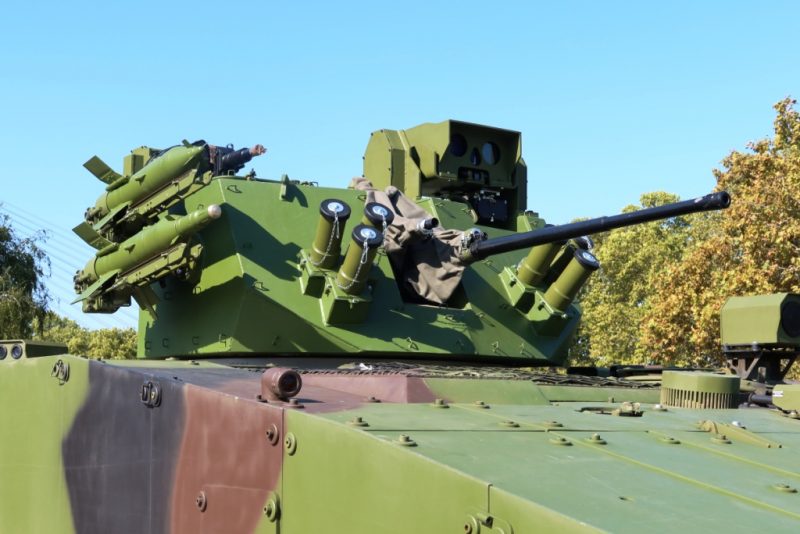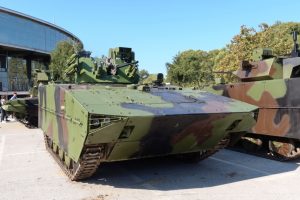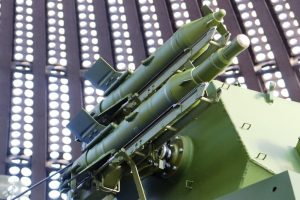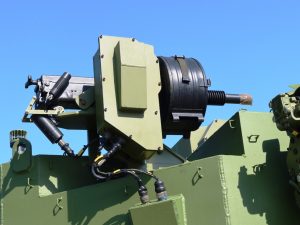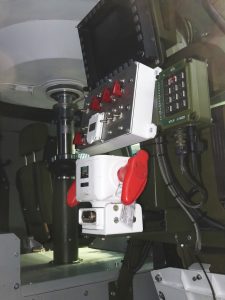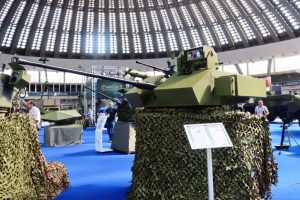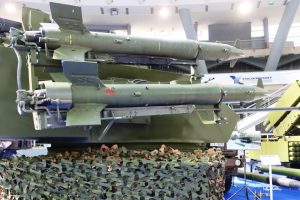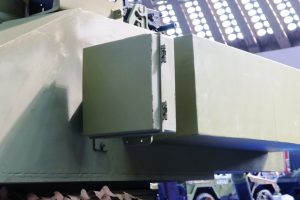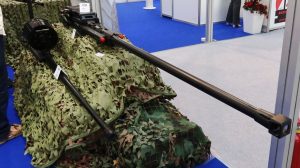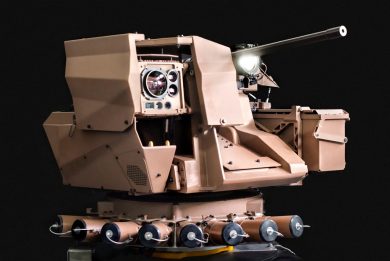Partner 2023 – Serbia Military Technical Institute showcases its new remotely controlled weapon stations
At Partner 2023 the Serbian Military Technical Institute (MTI) showcased its 20 and 30 mm remotely controlled weapon stations (RCWS) that are and will be installed on tracked and wheeled vehicles of the Serbian Army
Already in the low rate initial production (LRIP) phase, the RCWS 20 (Remotely Controlled Weapon Stations 20) was visible on two vehicles at Partner, inside the main pavilion installed on the Yugoimport Milosh 2 4×4 armoured vehicle, and outside on the M80AB1V2 modernised infantry fighting vehicle, The new RCWS, which has not yet been given a name, was developed using some components of the previous RCWS, however most of it is new.
The main cannon is the Zastava M55 which fires 20×102 mm ammunition; the aspect of that weapon is different from other applications, as here a higher recoil force is needed to automatically reload. The cannon has 180 ready to fire ammunition of one type, the M55 being a single feed system. A coaxial M86 machine gun produced by the same company and chambered for 7.62x54R ammunition is located on the right side of the main cannon, 600 ready to fire rounds being available for that weapon.
On the right side of the turret two rails host Malyutka second generation guided missiles; The missiles to be used will be of the modernised type, which development is being finalised by MTI itself, and which deliveries should start soon. On both turrets we could see the two types of missiles, the 2F fitted with a thermobaric warhead and the 2T, which features a tandem shaped charge warhead. Born as a manual guided missile, the Malyutka has been upgraded and the RCWS 20 is fitted with the commad system allowing to use it in the semi-automatic line of sight (SACLOS) mode, the operator keeping the crosshair on the target while the missile follows the aiming.
While all those weapons provide a direct fire support, the fourth one can be used both in the first or second arc of fire; the M93 30 mm automatic grenade launcher produced by Zastava is installed over the roof with its 29 30×29 mm ready-to-fire grenades and as all weapons can be fired from under armour. When used in the second arc of fire, over 45° elevation, the M93 allows hitting targets hidden by obstacles on the battlefield. Last but not least two 3-tube 82 mm smoke grenade launchers are fitted on the front-right and front-left of the RCWS.
Beside the ready-to-fire ammo, more rounds can be carried, how many and of which type depending very much on the mission. Should this be of the antitank type, beside the two extra missiles carried in a box on top of the Milosh 2 more could be loaded in the rear compartment, the same applying to 20 mm and 7.62 mm rounds should the task being more of the support infantry type. The same is true fo the RCWS 20 instaled on the M80 tracked chassis.
Sighting is provided by the optronic system located on the top front of the turret. This includes a cooled medium wave infrared thermal imager and a daylight TV camera, both fitted with optical zooms exceeding x20. A laser rangefinder is also fitted; the requirement called for a 10 km range, but EDR On-Line understood that during tests a range of over 12 km was reached.
The RCWS 20 is fitted with a modified DNS-1 optical backup day/night sight as well as with manual backup azimuth and elevation systems, allowing operating it even in case of power failure.
In combat order the RCWS 20 weighs around 1,400 kg and can be installed, as said before, on platforms ranging from light armoured vehicles up to heavy combat vehicles. In the Milosh 2 the control station was fitted in front of the rear right seat; it is made of three modules, the upper one being the colour display, followed by the electronic command box with all the switches, the lower element being the one hosting the control handles.
While the RCWS 20 is nearly ready to be fielded, the RCWS 30 is still in the development phase at MTI. This will be fitted to the M80AB2V2, the upgraded version of the M80 IFV armed with a 30 mm cannon, and possibly on other platforms. The cannon is a wholly new weapon known as M12, designed and produced by Zastava and introduced at Partner 2023, which fires NATO 30×173 mm ammunition. EDR On-Line understood that a practice ammunition is already produced in Serbia while work is ongoing on armour piercing and advanced high explosive rounds by Sloboda, the Serbian company specialised in ammunition based in Čačak.
As in the RCWS 20, two missiles are fitted on the right side of the turret; these will be of the POVR 2T5, another Malyutka derivative currently under development at MTI, and will have a 5 km range. Fitted with a newly developed tandem warhead and will be guidedit should provide a good antitank punch.This new missile will give up the wire command by radio frequency signals, which allows increasing the missile speed and range compared to the wire-guided original Malyutka.
The RF antenna used for guiding the missile is located on the left side of the turret, opposite to the missiles. The coax machine gun and the M83 grenade launcher on the roof complete the RCWS 30 armament as in the RCWS 20, both weapons retaining the same amount of ready-to-fire ammunition as in the smaller calibre RCWS.
According to MTI sources, the two turrets are identical, the main differences being the weight, the RCWS 30 weighs 1,650 kg, this increase being mostly due to the heavier cannon and munitions, 150 rounds for the M12, and to the heavier missiles. The main weapon is provided with two-axis stabilisation, allowing fire on the move. Fitted with a slip ring allowing continuous traverse, the RCWS turetts have an angular velocity in traverse of 50°/s while that in elevation is 35°/s. Elevation is comprised between -5° amd +45°.
The fire control system is the same for both turrets, apart from obvious software updates adding the ballistic tables relevant to the bigger calibre rounds. For standardisation purposes the sight is identical to that of the RCWS 20, which means the system exceeds the needs of the smaller calibre system. Without cannon, the RCWS turret is 3,900 mm long, 1,800 mm wide and 1,030 mm high.
According to MTI representatives the RCWS 30 prototype should be ready around mid-2024.
Photos courtesy P. Valpolini

